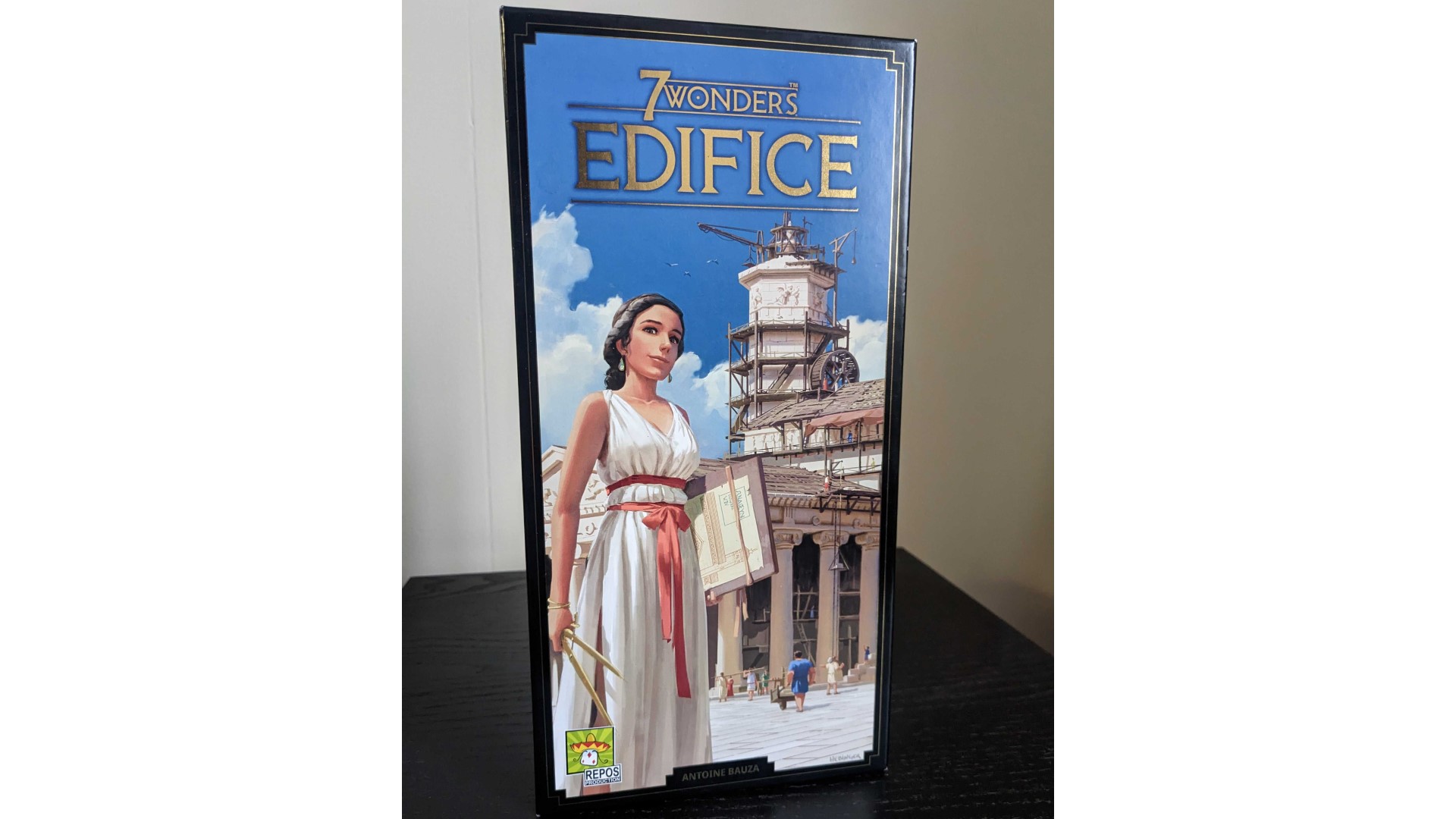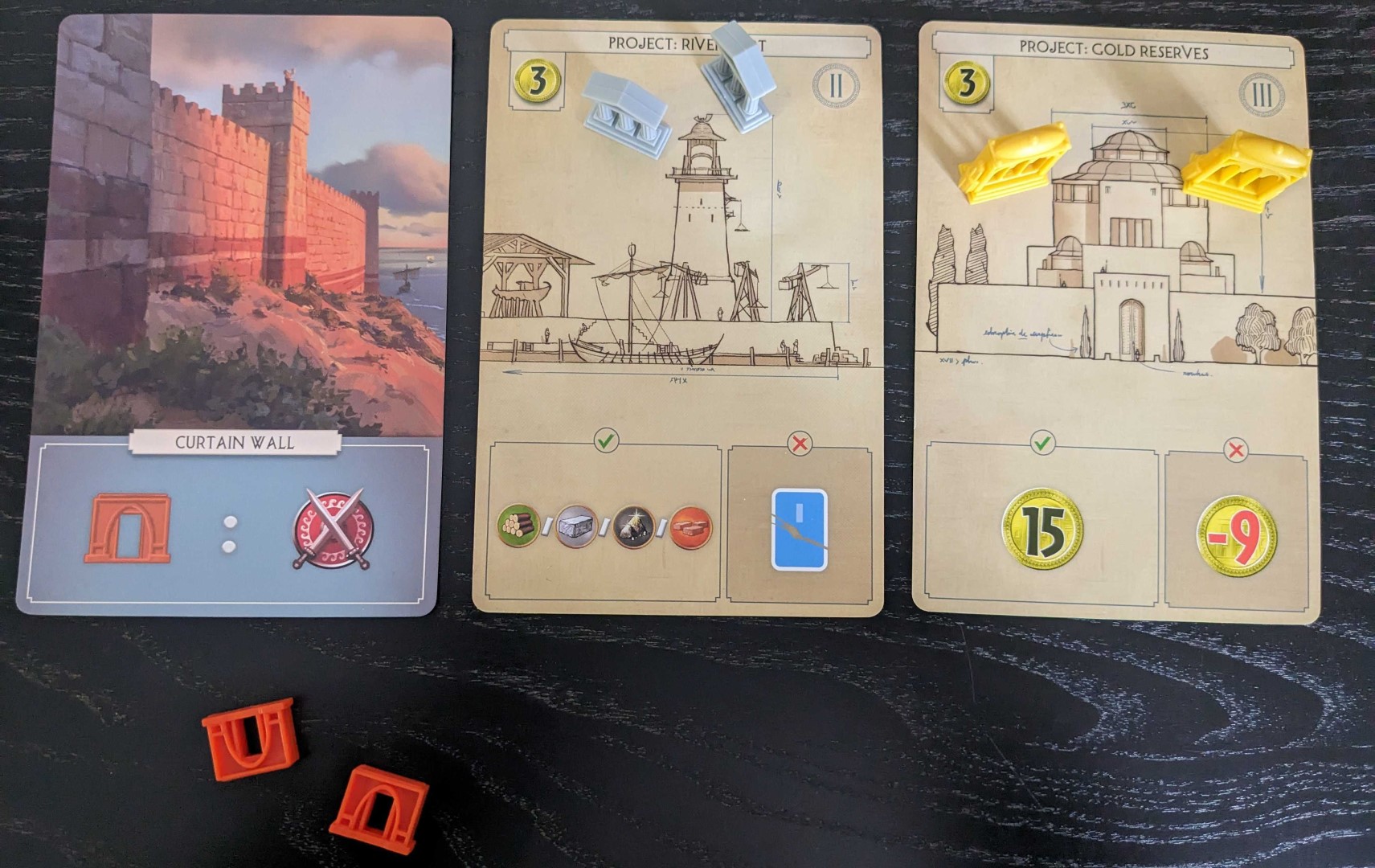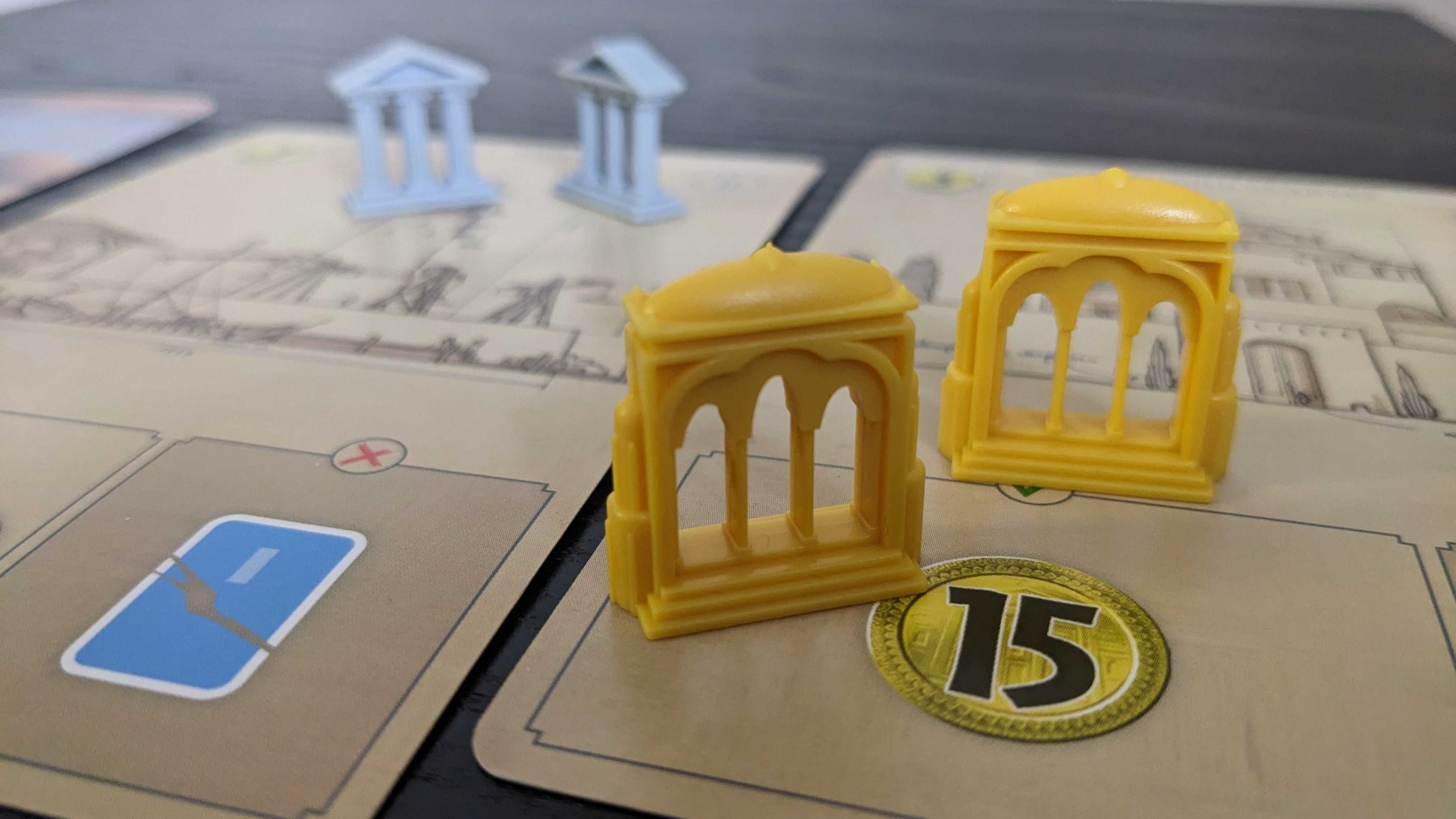Any 7 Wonders expansion faces a difficult task. The base game is so elegant and replayable, it’s hard to find places to improve. Any big rules change could totally upset the balance, but it needs to add fresh content to be worth buying.
7 Wonders Edifice is an expansion caught in this conundrum. It’s well-designed and adds variety, but it plays things a bit too safe, changing very little about the 7 Wonders experience to avoid fixing something that wasn’t broken in the first place.
What is 7 Wonders Edifice?
Edifice is the latest expansion for the drafting game, 7 Wonders. The core DNA that made its parent title one of the best board games around has remained the same, but there are a few new additions in the box. The expansion introduces two new wonder boards, Ur and Carthage, as well as the titular edifice mechanic.
Here’s how edifices work. Three random unconstructed edifices are dealt in the middle of the table, one for each age. A number of plastic participation pawns sit on top of the blueprints. Any time a player builds part of their wonder, they can choose to also pay the cost shown on the edifice, taking a participation pawn for their contribution. The edifice is constructed once all participation pawns have been removed.
Having a participation pawn holds several benefits. If the edifice is built by the end of its assigned age, you earn the card’s reward. Plus, if the edifice isn’t built in time, you’re protected from the card’s penalty.
Depending on where you’re shopping, you can expect to pick Edifice up for around $25 / £20. This is on par with other 7 Wonders expansions like Leaders, Cities, and Armada. Asmodee kindly sent Wargamer a copy to review, and we’ve taken it out for a few test spins. So, let’s break down these blueprints.
Is 7 Wonders Edifice good or bad?
Edifice continues the trend of gorgeous art and quality components in 7 Wonders. It’s also taken another leaf out of the core game’s book: approachability. When teaching someone how to play 7 Wonders, it’s going to take mere minutes to explain the extra rules Edifice introduces. The expansion adds some fresh variety to the core game without too much complexity.
The other side of this coin is this: Edifice lacks impact. While it slots easily into the core game, it also does almost nothing to shake up the 7 Wonders experience. There are no dramatic new strategies to consider, and penalties aside, it’s easy to forget about the edifices altogether.
Unless you’re playing with the Ur wonder board, that is. In Ur, building your wonder often means you get participation pawns for free. The daytime side of the board only offers this reward once, dealing out victory points the rest of the time. The nighttime board exclusively grants you participation pawns as rewards.
The aim of this board is clearly to double up on participation pawns, thus doubling the rewards you gain from a particular edifice. I much preferred the daytime side of Ur; the nighttime side means you rely heavily on the edifices – and, depending on which random blueprints were drawn, the rewards you reap might not be all that attractive, and they might not have great synergy with the cards you’ve ended up drafting. The nighttime board railroads the experience a little too much for my taste.
The Carthage board plays it much safer, offering you two wonder rewards to choose from at certain stages instead of one. As I said, the majority of the content in Edifice isn’t going to reinvent the wheel.
The word ‘inoffensive’ comes to mind; everyone I played Edifice with enjoyed themselves, but only a handful had overwhelmingly positive feelings about the expansion. I feel Edifice is an approachable, well-designed addition, but it makes no significant mark on 7 Wonders. With a game already so polished, I was hoping to be more wowed than I was by the added content.
Lovely, but is it a landmark?
If you want to explore new ways to play 7 Wonders that won’t overwhelm the core experience, Edifice makes a pleasant addition. However, if you’re looking for significantly more content or complexity, other expansions can do this better – and for roughly the same price.
Source: Wargamer






